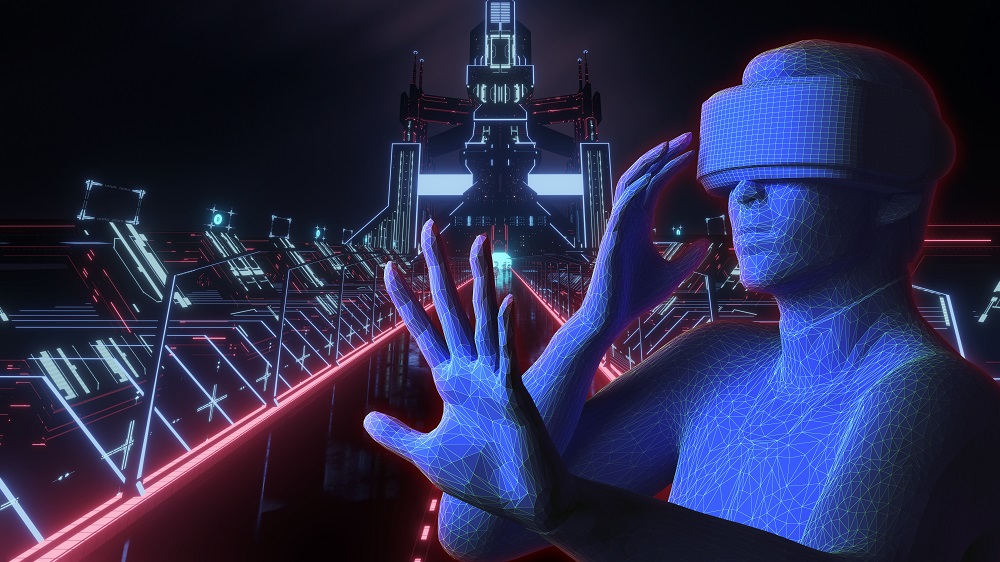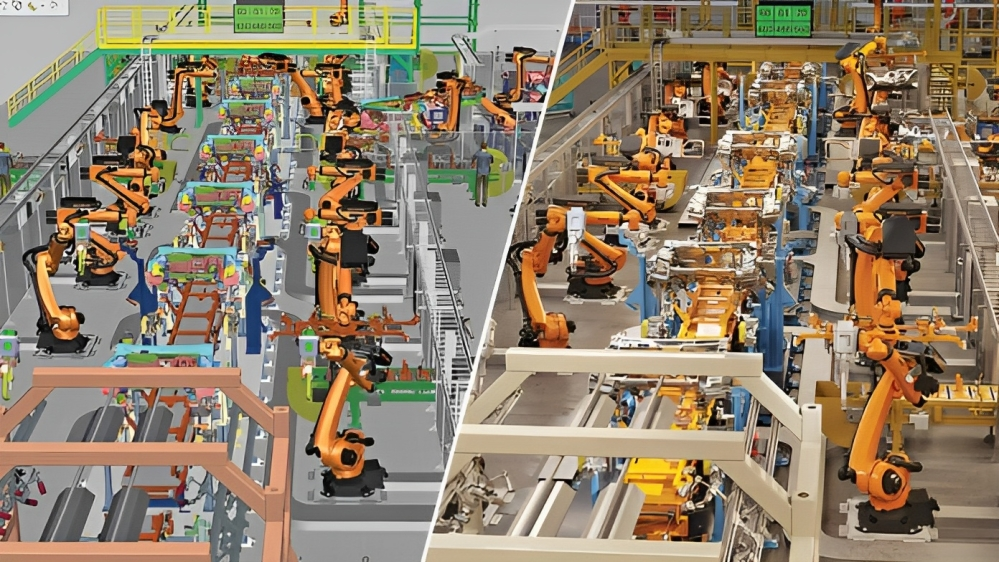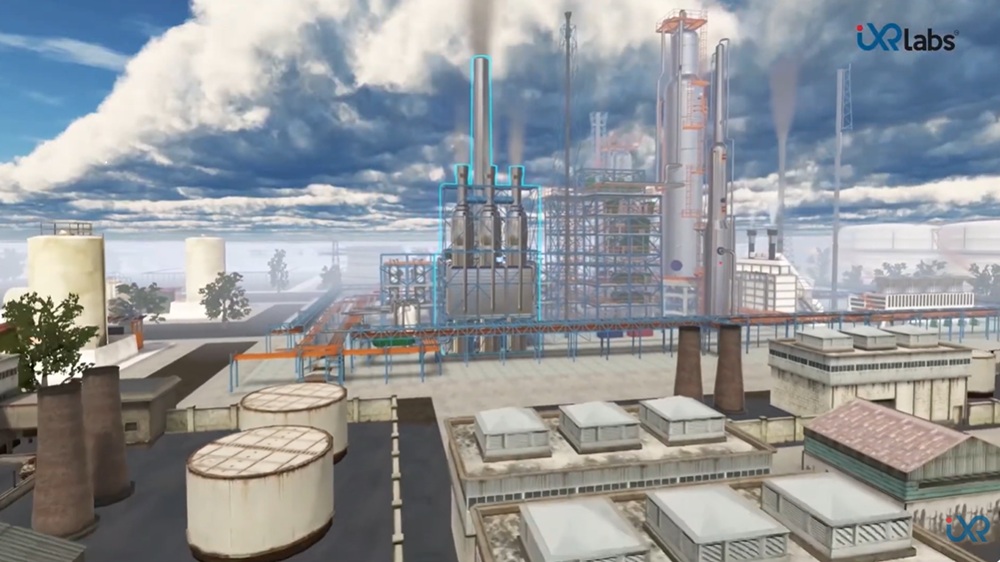Industrial Metaverse: Fostering Collaboration and Innovation in Education

Neal Stephenson’s vision of the Metaverse has long impacted how people conceive the virtual in the online world. Devised in his 1992 novel “Snow Crash,” the Metaverse has evolved over the years from being a shared space for online users.
Today, it’s synonymous with immersive digital experiences consisting of spatial worlds. And often sees the use of one or more extended realities to help enable it, which in turn has given rise to new applications.
What’s in a Name? Industrial Metaverse Examples
Industrial Metaverse sees the use of Metaverse concepts and its technologies - applied to enterprises across their domains.
Combining the virtual with the physical, it seeks to enhance productivity, decision-making skills, and areas for industry workers to collaborate.
Similar to Metaverse for higher education, for Industries, the concept holds great promise for innovation and is either being explored or already being implemented at some level or the other across industries involved in:
- Manufacturing: For example, BMW utilizes AR to evaluate new vehicle parts and accelerate design operations.
- Energy Systems: Telefonica uses a virtual twin of its energy control center to monitor and optimize the energy consumption of its infrastructure.
- Constructing Infrastructure: Such as Nemetschek - using AR and VR technologies to help visualize infrastructure projects and collaborate.
- Transport Solutions: Like Microsoft, designing replicas of major roadway systems and even airports to improve coordination levels in transporting people and goods.
- Healthcare Technology: Such as Accenture, exploring the use of the Metaverse applications for care delivery, digital diagnostics, etc.
According to an ABI Research forecast, the Industrial Metaverse market will expand to cross $100 billion by 2030.
The growth and revenue for this expansion are being driven by sectors such as manufacturing and logistics, which have seen many early adopters utilizing AI, extended realities, and more.
For instance, as part of its €1 billion investment plans in Germany, Siemens has also earmarked €500 million for an Industrial Metaverse hub at its Erlangen facility this year, in July.
It's in the Title: Industrial Metaverse & Digital Twins
Digital twins, as the name suggests, refer to replicas created for virtual platforms and interactions. It’s a major part of what defines the Metaverse and in leading much of the industrial use cases since it can use data from sensors and IoT devices to replicate the characteristics and behavior of the actual subject as in the real world.
Industrial Metaverse use cases enabled by Digital Twins:
1. Remote Monitoring
The use of digital twins allows companies across various industries to remotely and safely monitor the operations of any equipment or piece of hardware.
For enterprises having their work processes distributed across other locations, the replicas will be invaluable for exercising control, especially from remote locations.
2. Prototypes
Developing a product can be vastly modulated, given that virtual prototypes are easier for tests and experiments instead of physical ones. This accelerates the design iteration process and further helps to reduce the overall development costs.
3. Improved Efficiency
Using real-time data from digital twins, industry leaders can identify the bottlenecks that are slowing down their work process – helping them to streamline their operations and weed out inefficiencies while they’re at it.
4. Virtual Simulations
With digital twins, industries can conduct virtual simulations and testing of various scenarios without any impact on their physical assets.
These simulations offer a platform to experiment with process alterations, evaluate the effects of new technologies, and provide risk-free training for employees.
5. Predictive Maintenance
By utilizing replicas, industries can maintain continuous monitoring of the condition and performance of their machinery and equipment.
This data analysis enables businesses to anticipate maintenance requirements and proactively resolve potential issues, preventing breakdowns that can be expensive and swallow a lot of their work hours.
 (Courtesy: Siemens)
(Courtesy: Siemens)
Take the above as an example. The image shows a digital twin of the fabrication process, simulated using Siemens and connected with the Nvidia Omniverse.
In such a setup, the replicas of the assembly or production line can be remotely used to digitize the manufacturing process in factories and help workers to collaborate or plan their work better.
What drives Skill Training and Industrial Metaverse Education?
One of the main benefits of Industrial Metaverse is that the same blend of virtual and extended realities powering industrial operations also works wonders for training and skill learning. Metaverse in engineering education uses VR, AR and other digital technologies to enhance skill training.
This, in turn, provides experiential learning opportunities – allowing workers to practice dangerous tasks, use remote or expensive equipment and interact with a range of realistic scenarios relevant to their domain or sector. For instance:
Switzerland-based global healthcare company Novartis is using VR simulations to train lab skills with a high level of graphical fidelity.
The pharmaceutical leader is using a VR program to help their trainees practice handling hazardous materials and operating lab equipment.
The program is also vital in enabling their trainees and instructors to collaborate across different locations.
Walmart is using VR to train employees for processes such as customer service, operational skills, and leadership.
The application is programmed to display scenarios that the employee will face in their day-to-day proceedings, such as angry customers, inventory issues, or even emergencies.
Using the same, Walmart is also able to track the performance of their workers and use it to give an assessment and further tutoring.
Enabling Metaverse for medical education, GE Healthcare is using VR to train personnel such as their radiographers on how they can use equipment such as CT scanning machines, MRI, and X-ray tools.
Apart from allowing their trainees to test their skills in a virtual space, GE Healthcare is using the program to track how their trainees perform and how much they have progressed – proving to be vital for their instructors.
These are some instances where companies across various sectors are using the digital technologies enabled by the Industrial Metaverse to train and foster collaborations.
They reduce costs and boost innovations while improving productivity. And they are integral for companies to make informed decisions that will ultimately lead to an industrial landscape that stays efficient and competitive.
Experience the Future of Education: Dive into the World of Industrial Metaverse and Unlock New Possibilities for Enhanced Collaboration, Immersive Learning, and Real-World Problem-Solving
Industrial Metaverse Companies: The Network & Essentials
The nature of the Industrial Metaverse is such that companies, whether large or small – can think of adopting the technologies and integrating them without any hiccups.
Depending on the nature of one’s business operations or industrial needs, the costs and timeframe may vary, but the benefits will be future-proof and also last longer.
Let’s take a look at some of the essentials for Industrial Metaverse companies and their associated costs:
1. Hardware costs
The devices required to view content in VR or AR, such as controllers and headsets, glasses with sensors, and cameras can vary depending on factors such as functionality and hardware compatibility.
These headset costs can range from $200 - $500 to upwards of $1000s and more. Over time, the maintenance and even replacement of the devices when they start failing are included in these hardware costs.
2. Software costs
All the hardware and bits of gadgetry enabling Metaverse concepts for an industry rely on platforms, tools, and applications to enable them.
Filling these software needs can set a company back by $5000 to $250,000, depending on the functions, features, and designs of the app. The software might require future upgrades and updates, which may increase software costs even later down the line.
3. Training costs
The use of extended reality apps can bring about important metaverse benefits for engineering education and practice.
However, designing, developing, and delivering the training programs to be used by employees or one’s customers using VR or AR technology will bring certain costs of their own.
For instance, depending on the length, quality, and interactivity of one’s training program, the costs can climb up to $10,000 or even $100,000 to create.
Then there are the costs associated with hiring consultants and instructors who will help establish the training process for an organization.
4. Infrastructure costs
Not to be confused with the primary hardware needs for an Industrial Metaverse, but VR and AR programs for industrial use also require infrastructural support that sees their own set of requirements and costs.
For example, there’s the need to set up and maintain a network, storage, and servers and maintain high-speed bandwidth connections to run the technology or solution.
This might also spill over into including the costs it will usually take for a company to integrate the use of VR and AR within their existing systems and operations for optimal performance and stability.
Create New Avenues with a Trustworthy Alliance
These are some of the essentials required for setting up in the Industrial Metaverse, with a broad look at the costs associated with them. Thankfully, this is not a tech that your company needs to finish in one go.
You can begin the journey for your enterprise today, one step at a time, and the results will follow in due course.
That’s because the full potential of the Industrial Metaverse is a challenge that no enterprise can scale alone. So that no matter your industry, our solutions can help you realize the potential of your organization using the Metaverse.
.png)




